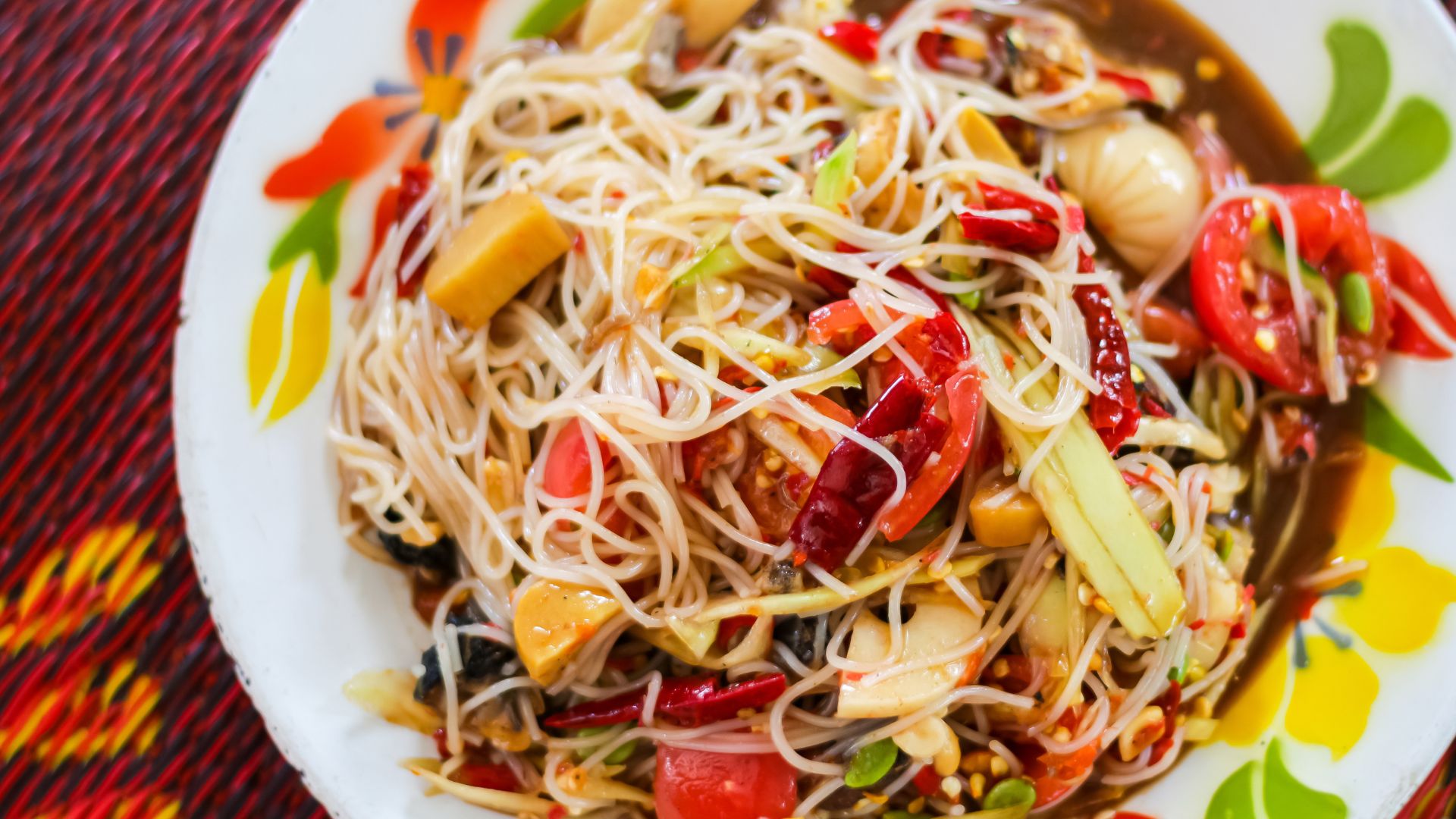In Salt Fat Acid Heat, chef Samin Nosrat explores the four fundamental elements that define global cuisine. But in Indonesia, the balance of flavors revolves around three: sweet, acid, and heat. From the street food stalls of Jakarta to the coconut-rich kitchens of Sumatra, these elements are not just ingredients but an unspoken rule of cooking—proof that contrast and harmony are deeply ingrained in the way Indonesians experience food.
Indonesian cuisine thrives on balance. The deep caramel notes of palm sugar (gula merah) round out the fiery intensity of sambal terasi in a plate of nasi uduk. The tangy sharpness of tamarind (asam jawa) cuts through the richness of rawon, East Java’s black beef stew. A squeeze of lime (jeruk limau) brightens soto Betawi, Jakarta’s coconut-milk-based beef soup, ensuring that each spoonful is fresh and dynamic.
For me, this balance isn’t just a principle—it’s a daily habit. No meal feels quite right without at least one condiment. A breakfast of nasi uduk is incomplete without a drizzle of sambal, and a plate of sate kambing needs its pickled shallots and chilies. Even at the most modest roadside warung, there’s always an array of sambals, pickles, and sauces, proving that the real magic of Indonesian food often lies in the small details.

The Science of Balance
The combination of sweet, acid, and heat is more than a culinary tradition—it’s rooted in sensory science. Each element plays a specific role in how we perceive taste:
- Sweetness enhances and rounds out flavors. It balances bitterness and mellows out spiciness.
- Acidity brightens a dish, cutting through richness and preventing heaviness.
- Heat—usually from chili—adds excitement, stimulating the palate and intensifying other flavors.
This interplay is why some of the world’s most iconic dishes rely on contrast. In Thai som tam (green papaya salad), palm sugar offsets the fire of chili, while lime juice keeps the dish vibrant. In Mexican chamoy, the blend of fruit, vinegar, and spice creates a sauce that is simultaneously sweet, sour, and fiery. These combinations work because they keep the palate engaged, ensuring that no single taste overpowers the rest.
Beyond just pleasure, balance also affects digestion. Acidity helps break down fats, which is why rich dishes are often paired with something tangy—like how Filipino lechón (roast pig) is served with vinegar-based sarsa. Meanwhile, capsaicin—the compound that gives chili its heat—stimulates the release of endorphins, creating the addictive, pleasurable sensation that spice lovers crave.
This principle extends beyond specific cuisines. In the Middle East, fattoush salad relies on the tartness of sumac and pomegranate molasses to contrast with crisp vegetables and fried pita. In Japan, ponzu sauce—a blend of citrus, soy sauce, and dashi—is used to add acidity and umami to rich dishes like grilled meats and sashimi. Even in Italy, balsamic vinegar is used to bring a sharp, sweet note to everything from salads to slow-cooked meats.
A Global Flavor Code
Each region has its own way of combining sweet, acid, and heat, shaped by local ingredients and cultural preferences:
- Sweet: Indonesia’s kecap manis (sweet soy sauce) enriches satay and fried rice, much like Mexico’s dulce de leche transforms pastries.
- Acid: The tang of tamarind defines Filipino sinigang, just as sumac’s citrusy punch brightens Middle Eastern dishes.
- Heat: Korean gochujang delivers slow-burning spice, while Jamaican jerk seasoning layers heat with warm spices like nutmeg and allspice.
Condiments often reflect national identity. Soy sauce is a staple across East Asia, yet varies in sweetness and fermentation. Indian chutneys come in countless variations, blending heat, acidity, and sweetness into spoonfuls of concentrated flavor. In the Caribbean, pepper sauce made with Scotch bonnet chilies is both a point of regional pride and a necessary addition to meals.

The Indonesian Flavor Spectrum
Indonesia’s love for contrast goes beyond individual dishes—it’s embedded in how meals are structured. Condiments are not afterthoughts but integral parts of the dining experience, designed to create a dynamic range of flavors in every bite.
This is especially clear in sambals. While most people associate sambal with pure heat, its variations highlight Indonesia’s deep understanding of balance. There’s sambal mangga, where shredded unripe mango adds an acidic, slightly bitter contrast to chili’s spice. Sambal matah, a Balinese raw sambal, uses lime and lemongrass to create a fresh, aromatic kick. Even fruit-based sambals, like sambal strawberry, show how Indonesians instinctively pair sweetness with heat to create something unexpected yet deeply satisfying.
The same principle applies to classic dishes:
- Soto Betawi & Acar: Jakarta’s creamy beef soup is served with tangy pickled cucumbers and carrots, ensuring the broth never becomes too heavy. A drizzle of sweet soy sauce adds depth.
- Sate Maranggi: West Java’s signature beef skewers are marinated in a mix of sweet soy sauce and tamarind, then paired with sambal dadak, a raw chili relish that brings immediate heat and freshness.
- Rawon & Sambal Kecap: The nutty, slow-cooked black beef stew of East Java is lifted by a simple condiment of sweet soy sauce, fresh chilies, and a squeeze of lime.
- Nasi Liwet Solo: Aromatic rice cooked in coconut milk is never served alone—it’s paired with sambal bawang (garlic chili sambal) or sambal tomat (tomato sambal) for extra layers of flavor.
Even in casual meals, these elements appear in unexpected ways. Fried tempeh is dipped in kecap pedas, a blend of sweet soy sauce and bird’s eye chilies. Fried fish comes with dabu-dabu, a North Sulawesi sambal made with fresh tomatoes, lime, and raw chili. Everywhere you look, there’s a careful interplay of sweet, acid, and heat, proving that for Indonesians, contrast isn’t just a technique—it’s a way of eating.
From street food to home kitchens, Indonesia’s approach to flavor is both instinctive and intentional. It’s why every bite feels complete, why condiments are as important as the main dish, and why balance—however subtle—is always present. In the end, sweet, acid, and heat aren’t just ingredients. They are the foundation of taste itself.









